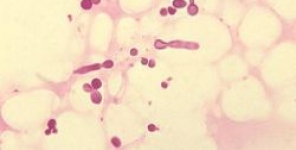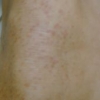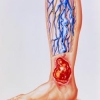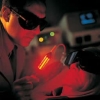Fotoepilazione con un diodo laser rispetto alla luce pulsata intensa (IPL): uno studio randomizzato, intra-paziente da sinistra a destra
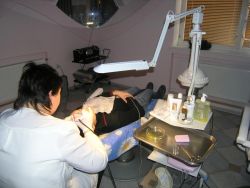 Attualmente sono molto richieste delle opzioni sicure ed efficienti per rimuovere i peli indesiderati. I dispositivi laser e le fonti di luce pulsata intensa (IPL) sono le modalità di trattamento più comunemente utilizzate. Eppure, sono disponibili solo pochi studi clinici randomizzati e controllati (RCTs) che confrontino i dispositivi laser e l'IPL, mentre RCTs con risultati a lungo termine non sono proprio presenti in letteratura.
Attualmente sono molto richieste delle opzioni sicure ed efficienti per rimuovere i peli indesiderati. I dispositivi laser e le fonti di luce pulsata intensa (IPL) sono le modalità di trattamento più comunemente utilizzate. Eppure, sono disponibili solo pochi studi clinici randomizzati e controllati (RCTs) che confrontino i dispositivi laser e l'IPL, mentre RCTs con risultati a lungo termine non sono proprio presenti in letteratura.
Obiettivi: Per confrontare la sicurezza e l'efficacia a lungo termine dei diodi laser (DL) e delle fonti IPL per la rimozione dei peli ascellari, abbiamo condotto uno studio controllato, intra-paziente, da sinistra a destra, e con valutatore in cieco.
Metodi: I trattamenti IPL (Ellipse Flex PPT, di sviluppo dermatologico danese, Hoersholm, Danimarca; λem = 600-950 nm) e DL (LightSheer XC system, Lumenis Inc., Santa Clara, CA, USA; λem = 800 nm) sono stati valutati nei 30 partecipanti allo studio (tipo di pelle II-III) che presentavano tutti una crescita indesiderata di peli ascellari. Sono stati effettuati sei trattamenti con ciascun dispositivo, ad intervalli di 4 settimane. La valutazione finale è stata effettuata 12 mesi dopo l'ultimo trattamento per mezzo del conteggio dei peli usando delle foto dettagliate. L'endpoint primario è stato la riduzione della crescita dei peli, analizzato sulla base di un'intenzione a trattare e su l'ultima osservazione portata avanti dal basale (n=30); mentre gli endpoint secondari sono stati l'efficacia relativa al paziente, il dolore correlato al trattamento, gli effetti collaterali e la durata del trattamento.
Risultati: Entrambi i dispositivi hanno ridotto significativamente la conta dei peli. Le riduzioni medie rispetto al basale (3 e 12 mesi dopo l'ultimo trattamento) sono state del 59.7% e del 69.2% per DL e del 42.4% e del 52.7% per il trattamento IPL (p < 0.01). Il trattamento DL è stato caratterizzato da un maggior grado di dolore (3.7 ± 2.1 (DL) vs. 1.6 ± 1.4 (IPL); p < 0.01; scala analogica visiva) ma potrebbe essere condotto più velocemente (33.1 ± 3.8 s (DL) vs. 40.1 ± 5.0 s (IPL); p < 0.01). Per entrambe le terapie, non è stato osservato alcun effetto collaterale.
Conclusione: Sia il trattamento con DL che quello con IPL sono altamente efficaci, duraturi e sicuri. DL è risultato essere più efficace rispetto al trattamento con IPL. Il trattamento con DL è stato più doloroso, ma ha necessitato anche di minore tempo rispetto alla terapia IPL.
Storia della pubblicazione:
Titolo: Photoepilation with a diode laser vs. intense pulsed light (IPL): a randomized, intra-patient left-to-right trial
Rivista: British Journal of Dermatology. doi: 10.1111/bjd.12182
Autori: A. Klein, S. Steinert, W. Baeumler, M. Landthaler, P. Babilas
Affiliazioni: Department of Dermatology, University Hospital Regensburg, Regensburg, Germany
Abstract:
Background: Safe and efficient options for removing unwanted hair are in great demand. Laser devices and intense pulsed light (IPL) sources are the most commonly used treatment modalities. Yet, only a few randomised controlled trials (RCTs) comparing laser and IPL devices are available, and RCTs with long-term results are missing in the literature.
Objectives: To compare the safety and long-term efficacy of diode lasers (DL) and IPL sources for axillary hair removal, we conducted an intra-patient, left-to-right, assessor-blinded and controlled trial.
Methods: IPL (Ellipse Flex PPT, Danish Dermatological Development, Hoersholm, Denmark; λem = 600-950 nm) and DL (LightSheer XC system, Lumenis Inc., Santa Clara, CA, USA; λem = 800 nm) treatments were evaluated in 30 study participants (skin type II-III) with unwanted axillary hair growth. Six treatments with each device were carried out in 4-week intervals. Final assessment was conducted 12 months after the last treatment by means of hair counts using close-up photographs. Primary endpoint was reduction in hair growth, analysed on an intention-to-treat and last-observation-carried-forward basis (n=30), and secondary endpoints were patient-rated efficacy, treatment-related pain, adverse effects and treatment duration.
Results: Both devices significantly reduced hair counts. Mean reductions from baseline (3 and 12 months after the last treatment) were 59.7% and 69.2% for DL and 42.4% and 52.7% for IPL treatment (p < 0.01). DL treatment induced significant more pain (3.7 ± 2.1 (DL) vs. 1.6 ± 1.4 (IPL); p < 0.01; visual analogue scale) but could be conducted faster (33.1 ± 3.8 s (DL) vs. 40.1 ± 5.0 s (IPL); p < 0.01). No severe side effects were observed for either therapy.
Conclusion: Both DL and IPL treatment is highly effective, long-lasting and safe. DL was found to be more effective than IPL treatment. DL treatment was more painful but less time-consuming than IPL therapy.
